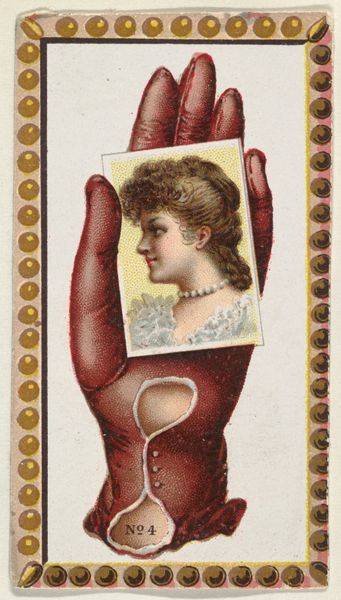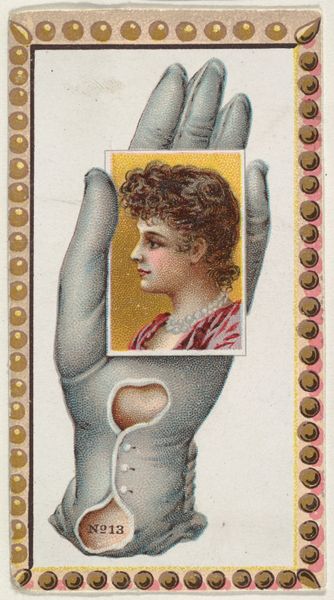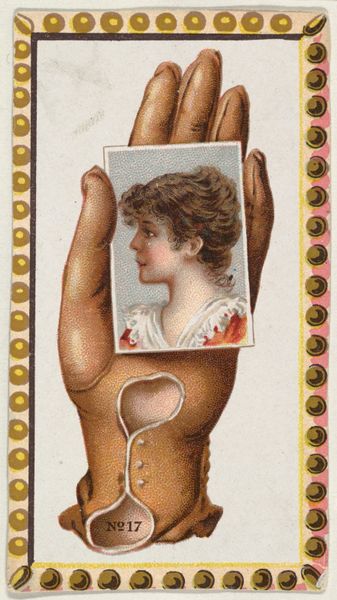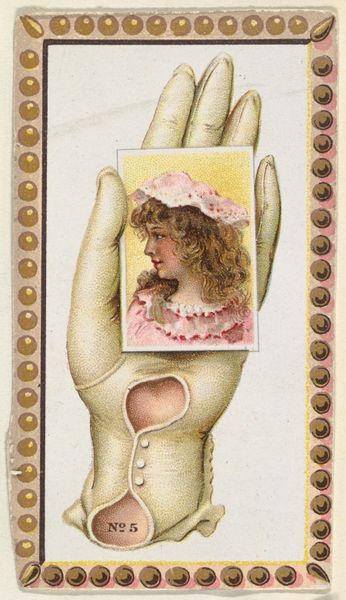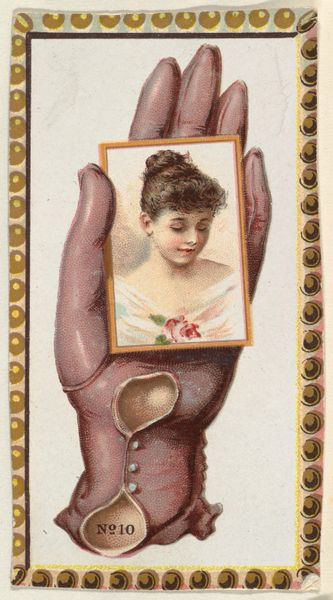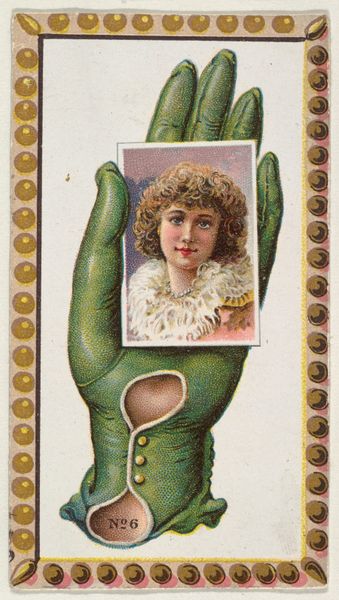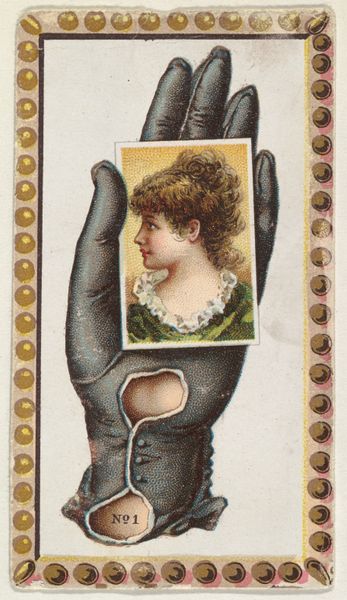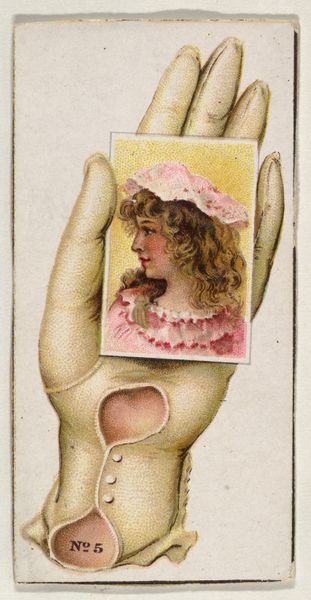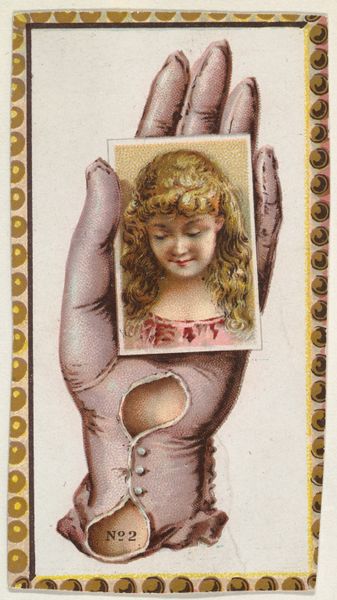
Card Number 3, cut-out from banner advertising the Opera Gloves series (G29) for Allen & Ginter Cigarettes 1885 - 1895
0:00
0:00
drawing, coloured-pencil, print
#
portrait
#
drawing
#
coloured-pencil
# print
#
figuration
#
coloured pencil
Dimensions: Sheet: 3 1/8 x 1 3/4 in. (8 x 4.5 cm)
Copyright: Public Domain
Curator: This engaging piece, "Card Number 3, cut-out from banner advertising the Opera Gloves series (G29) for Allen & Ginter Cigarettes", dates from 1885 to 1895. It’s currently held at the Metropolitan Museum of Art. Editor: I'm immediately struck by the slightly surreal composition, the hand is so dominant, and that gloved texture. It's almost tactile. Curator: Allen & Ginter, primarily a tobacco company, inserted these trade cards into their cigarette packs. This one highlights a specific item—opera gloves—and, implicitly, the glamorous lifestyle associated with them. It aimed to build brand identity and customer loyalty in a competitive market. Editor: It’s visually arresting how the ornate frame and the formal portrait contrast so vividly. The subject gazes with a demure elegance in profile, the delicate pastels almost fighting with the gloved hand. Is there a deliberate incongruity, perhaps hinting at something deeper than mere advertising? Curator: Precisely! The gloves suggest refinement, wealth, and participation in high society events. The trade cards helped popularize these aspirations across different socio-economic levels, subtly shaping cultural ideals of femininity. Notice that a lady should aspire to the “Opera Gloves” world through such commercial and lifestyle associations. Editor: Yes, I also observe the precision of the colored pencil technique which conveys depth and detail. Curator: While marketed to both men and women, its implied female viewership signals new arenas of influence. Cards like these normalized an increasingly consumerist lifestyle and a particular aspirational femininity, embedded in an everyday, disposable object like a cigarette pack. It helped to cultivate desires, reinforcing gender roles of the time. Editor: Fascinating. The object becomes an accessible window into what it meant to participate in the society. Even from this single item one is immediately invited to think through commercial design, lifestyle, and social class markers that defined the age. Curator: Indeed, the card gives insight into commerce, class, and aspirations during a transformative era. Editor: This piece really does go beyond a surface glance; one leaves looking for other stories embedded there, in this very small image.
Comments
No comments
Be the first to comment and join the conversation on the ultimate creative platform.
